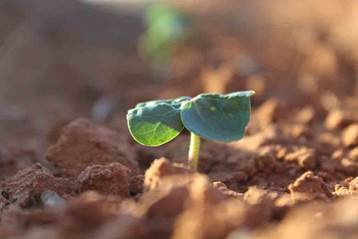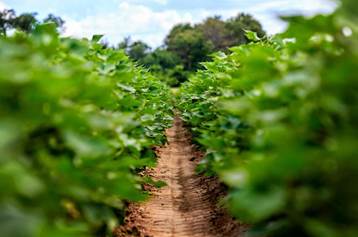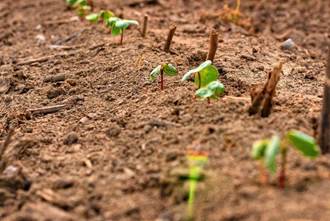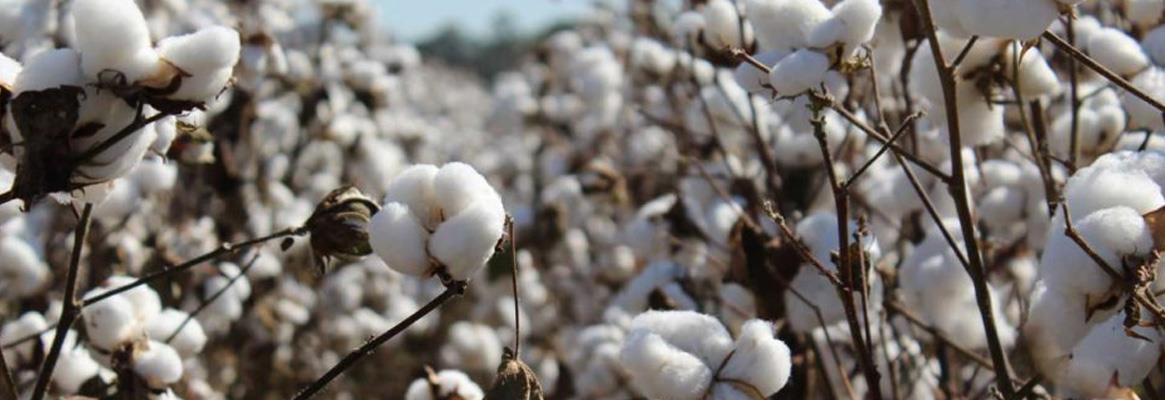For US cotton growers, their land is their livelihood. Growers work tirelessly to preserve their soil, not only for the survival of their crop but to safeguard the land for their children and generations to come.
Over the past 35 years these growers have done much to improve the health of the soil on their farms. Through the adoption of practices such as minimal tillage, and the growing of winter cover crops, US cotton farms have improved soil health and increased soil carbon levels. They have also reduced soil loss by 37 per cent per acre.

While plowing or tilling can be beneficial to crop growth, these methods lead to the release of CO2 that was trapped within the soil. Growers have made great strides to reduce CO2 emissions by adopting conservation tillage practices, which increases the amount of CO2 captured from the air into the soil by as much as 400 pounds of carbon per acre per year. This means the carbon emitted and the carbon stored are nearly equal.
Taking into account the carbon stored in cotton fiber, an acre of no-till cotton actually stores 350 pounds more of atmospheric carbon than was emitted during cotton production. Now, nearly one-third of US cotton farms use no-till methods. Additionally, research has shown the uptake of improved conservation tillage practices has dramatically reduced soil erosion.
The use of cover crops or perennial species has helped prevent periods of bare ground on farm fields, which is when the soil is most susceptible to erosion and loss into waterways. The use of cover crops has further enhanced carbon sequestration. Cover crop usage, which has a range of benefits for overall soil health, is growing in the US at a rate of 8 per cent per year. While these practices are now commonplace on U.S. cotton farms, the sustainability story hasn't been properly told due to a lack of comprehensive data.

The goal of the U.S. Cotton Trust Protocol is to set a new standard in more sustainably grown cotton by better telling this story with the necessary data. It measures six sustainability metrics, including soil loss and soil carbon from US cotton growers, and shares data in aggregate with growers, brands, retailers, mills, and manufacturers to help them all better tell the sustainability story about the cotton they source.
The Trust Protocol underpins and verifies US cotton's sustainability progress through sophisticated data collection and independent third-party verification. Choosing Trust Protocol cotton will give brands and retailers the critical assurances they need that the cotton fiber element of their supply chain is more sustainably grown with lower environmental and social risk.
US cotton growers continue to innovate in order to improve sustainability and soil health by expanding the use of GPS and sensor-driven irrigation to get more comprehensive in-field measurements. And brands and retailers have set comprehensive sustainability plans with significant objectives for their businesses. This is why the Trust Protocol has set ambitious sustainability goals aligned with the United Nations Sustainable Development Goals to reduce US cotton's soil loss by 50 per cent and increase soil carbon concentration by 30 per cent by 2025.

Precision agriculture technologies including GPS receivers, multi-spectral images and ground-based sensors map out soil property variations. Soil mapping is being used by more and more US cotton farmers as a tool to provide a snapshot of what needs are for certain fields. Soil moisture probes provide water level measurements at a series of distances below ground level, which enables cotton farmers to understand if the crop is receiving enough water at all levels. Today, almost 63 per cent of US cotton growers employ some type of precision technology.
With access to the new system, growers can continue to employ technology to improve their farms' sustainability and soil health with access to peer data to baseline their own operations, verified data year-over-year to measure their progress, and insights and best practices from across the industry to help them advance their work towards the Trust Protocol's ambitious goals.
By signing up for the Trust Protocol, mills, merchants, brands and retailers will gain access to US cotton with sustainability credentials proven via Field to Market: The Alliance for Sustainable Agriculture, measured via the Fieldprint Calculator and verified with Control Union Certifications. The Trust Protocol has more than 300 members already including brands Gap Inc., Byford, and Next, and mills and manufacturers across the globe. These members have joined to better understand the sustainability progress of US cotton and communicate that progress to customers.
The sustainability story of US cotton starts at the soil level and it's for every member of the global supply chain to tell. Become a member today at TrustUSCotton.org.










Comments